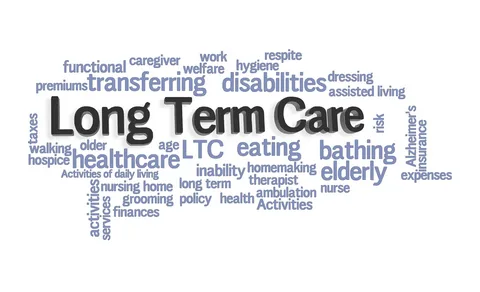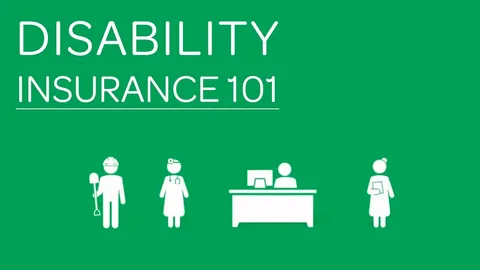Long-Term Care Insurance: Planning for the Future
As we navigate the complexities of life, one critical aspect that often goes overlooked is long-term care. With an increasing number of individuals requiring assistance as they age, long-term care insurance has become a vital consideration for many families. This blog explores the importance of long-term care insurance, the different types available, and how to plan for a secure future.
Understanding Long-Term Care
Long-term care encompasses a range of services designed to meet individuals’ health or personal care needs over an extended period. This can include assistance with daily activities such as bathing, dressing, and eating. It’s essential to understand that long-term care is not just for the elderly; younger people can also require these services due to chronic illnesses, injuries, or disabilities.
The Growing Need for Long-Term Care Insurance
Statistics show that nearly 70% of people over 65 will require some form of long-term care during their lifetime. With this in mind, the financial implications can be daunting. Long-term care services can be expensive, often costing thousands of dollars per month. This reality highlights the importance of planning ahead and considering long-term care insurance as a financial safety net.
What Is Long-Term Care Insurance?
Long-term care insurance is a policy designed to cover the costs associated with long-term care services. This coverage can include nursing home stays, in-home care, assisted living facilities, and even adult day care. By investing in long-term care insurance, policyholders can safeguard their savings and ensure they receive quality care when needed.
Types of Long-Term Care Insurance Policies
- Traditional Long-Term Care Insurance: This is the most common type of policy, offering coverage for a specified duration. Premiums can vary based on age, health, and the benefits selected. It’s crucial to read the policy details carefully to understand what is included and excluded.
- Hybrid Long-Term Care Insurance: These policies combine life insurance with long-term care benefits. If the long-term care benefits are not utilized, the policyholder’s beneficiaries receive a death benefit. This option can provide peace of mind, knowing that the investment serves a dual purpose.
- Short-Term Care Insurance: This type of policy provides coverage for a limited period, usually from a few months to a year. It is designed for those who may need temporary care following surgery or hospitalization.
Factors to Consider When Choosing a Policy
When selecting a long-term care insurance policy, there are several key factors to consider:
- Coverage Options: Assess the types of care covered, including in-home services, assisted living, and nursing homes. Look for policies that offer a range of options to ensure comprehensive coverage.
- Benefit Amounts: Determine how much coverage you will need based on potential future costs of care. Research current rates in your area to get an idea of how much you might need.
- Elimination Period: This is the waiting period before benefits kick in. Policies with longer elimination periods typically have lower premiums, but it’s essential to ensure you can cover costs during this time.
- Inflation Protection: Given the rising costs of healthcare, consider policies that include inflation protection to ensure your benefits keep pace with future increases in care costs.
The Cost of Long-Term Care Insurance
The cost of long-term care insurance varies widely based on several factors, including age, health, the type of policy, and the coverage amounts selected. Generally, the earlier you purchase a policy, the lower your premiums will be. It’s advisable to obtain quotes from multiple insurers and compare them to find the best fit for your needs.
When to Purchase Long-Term Care Insurance
Timing is critical when considering long-term care insurance. Many experts recommend purchasing a policy in your 50s or early 60s, as premiums tend to be more affordable at this age. Additionally, securing a policy when you are in good health can ensure you are eligible for coverage. Waiting until you develop health issues can lead to higher premiums or even denial of coverage.
The Role of Family in Long-Term Care Planning
Family discussions about long-term care planning are vital. Engaging in open conversations can help identify preferences, expectations, and financial capabilities. It’s also beneficial to involve family members in the decision-making process, as they may have insights into the types of care that would be most suitable.
Alternatives to Long-Term Care Insurance
While long-term care insurance is a valuable tool for many, it’s not the only option. Other alternatives include:
- Self-funding: Setting aside savings to cover future care costs.
- Government programs: Programs like Medicaid can provide assistance for those who qualify.
- Life insurance with accelerated benefits: Some life insurance policies allow you to access a portion of your death benefit for long-term care expenses.
The Importance of Regular Policy Reviews
Once you’ve secured a long-term care insurance policy, it’s essential to review it regularly. Life changes, such as health status or financial circumstances, may require adjustments to your coverage. Stay informed about policy terms and potential changes in the long-term care landscape to ensure your plan remains effective.
Final Thoughts on Long-Term Care Planning
Planning for long-term care is an essential part of financial security as you age. Long-term care insurance can provide peace of mind, knowing that you and your family are protected from the overwhelming costs associated with care services. By understanding your options, considering your unique needs, and involving your family in the planning process, you can create a comprehensive strategy that ensures your well-being and financial stability in the future.
In conclusion, the importance of long-term care insurance cannot be overstated. As you plan for the future, consider how this insurance can play a critical role in safeguarding your health and financial legacy. Take the time to research your options, speak with professionals, and make informed decisions that align with your long-term goals. With the right preparation, you can navigate the uncertainties of aging with confidence and security.










nice content and very useful content